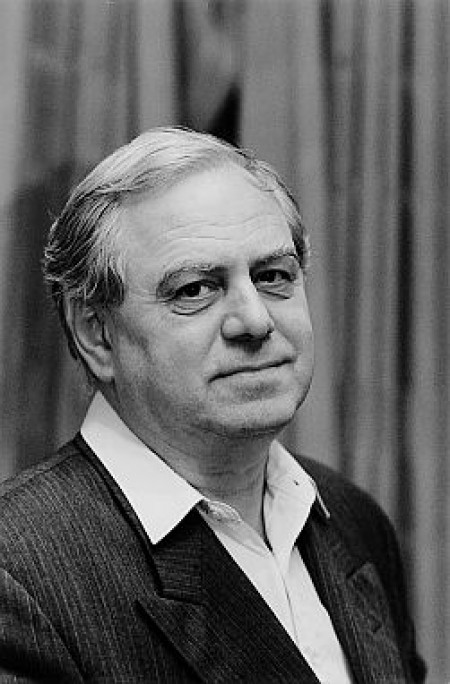
2 February 1935, Szeged – 26 August 2011, Budapest
In the late twentieth, early twenty-first century, when musical life, like life in general, was and is subject to ever increasing specialisation, with music historians and performers limiting themselves to virtually one musical period, it is almost exceptional to find a musician who differs from his colleagues precisely because of his multi-faceted character - through having a life's work which emphasises the unity of musical theory and practice. László Dobszay, a respected music historian, pedagogue, practitioner of church music, the author of scholarly and popularising texts of fundamental importance, excellent organiser, and, led by his sense of responsibility for Hungarian musical life and education, also a man active in public life, was such a personality.
He was admitted to the Music Academy's School for Exceptional Talents at an early age, in 1947. He learned composition from János Viski, piano from Iván Engel, folk music from Zoltán Kodály, and music history from Bence Szabolcsi, receiving his composer's diploma in 1957. Besides the Academy, from 1955 he also completed the Hungarian and History joint degree course at ELTE, graduating in 1959. Between 1956 and 1968 he worked primarily as a teacher (teaching music literature and chamber music in a Budapest music school), as well as composing, writing articles and working on the comprehensive reform of the system of Hungarian music education. As the result of this work, The world of sounds (A hangok világa), a sol-fa textbook and methodological series were published. At the invitation of Zoltán Kodály and Benjamin Rajeczky, in 1966 he became a member of the Folk Music Research Group of the Hungarian Academy of Science (since 1974 part of the Institute of Musicology). Besides trips collecting folk songs in north-east Hungary and Transylvania, he also worked on organising the folk music material, leading later (1988) to the publication, Catalogue of Hungarian folk song types (A magyar népdaltípusok katalógusa), authored jointly with Janka Szendrei. He wrote many studies on the history of folk music and medieval music, comparing the two traditions of melodies. László Dobszay carried out fundamental research in the field of European liturgical music, finding the Hungarian sources from the Middle Ages, mapping out the repertoire, and uniting the content of the sources in a systematic catalogue of melodies. The result of this work spanning several decades is the CAO-ECE (Corpus Antiphonalium Officii Ecclesiarum Centralis Europea) series (jointly with Gábor Prószéky), which is available to any historian not only in printed form but also on a computer data base, and which places the research of the history of the officium on a completely new basis. In the volume relating to the middle ages of the scholarly series, Hungary's musical history (Magyarország zenetörténete), (Ed. Rajeczky), Dobszay and Szendrei, as the recognised experts of the subject, wrote the chapters concerning Gregorian music.
Besides his work as a historian, Dobszay also taught, from 1970 as teacher at the Music Academy. He taught Gregorian music, the classic theory of forms, Latin and folk music, to students specialising in musicology. His classes were attended by many visiting students and even colleagues, because, as a one-time pupil, later colleague of his put it a decade later: "we learned first and foremost Music from László Dobszay, which is why his classes were attended, among others, by György Kurtág. One could learn standards, thoroughness and immersion in the subject from him." In 1970, together with Rajeczky and Szendrei, he founded the Schola Hungarica ensemble, which became one of the outstanding workshops of Hungarian musical life, giving a rare demonstration of the indivisible unity of high-class performing art and, backing it, world standard research work. This is precisely what enabled the Schola to achieve world fame at a time when church music was frowned upon in Hungary. Dobszay gained the academic title, Candidate in 1975, with a thesis entitled The melodic world of the lament style in our music history and folk music (A siratóstílus dallamköre zenetörténetünkben és népzenénkben). In 1976 he became head of the Melodic History Group of the Institute of Musicology, and in 1990 of its folk music department. In 1990 he re-established the church music department of the Music Academy and became its head. In 1992 the President of the Republic, Árpád Göncz, appointed him university professor. Besides his scientific books and essays, he also published numerous works concerning pedagogy, church music and other cultural topics. He made approximately forty recordings with the Schola Hungarica. He was founder chairman of the Hungarian Church Music Society, member of the musicology committee of the Doctoral Council, and organiser of and lecturer at the Cantus Planus Gregorian conferences held under the aegis of the International Musicology Society.
His many-faceted work was rewarded with many prizes: Erkel Prize (1984), Musica Omnium Prize (1992), the Order of Merit of the Hungarian Republic (middle grade) (1995), the Grand Prize of the Music Branch of the National Association of Hungarian Artists (1998), the For Budapest Prize (1998), the Széchenyi Professorial Scholarship (1999), the Gold Medal of the President of the Republic, and the Hungarian Academy of Science Prize (2000).
László Dobszay died on 26 August 2011.
Á. D.


